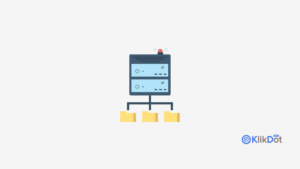Artificial Intelligence (AI) development has become a pivotal component in the tech landscape, driving advancements and providing innovative solutions across various industries. As AI continues to evolve, understanding its development process, benefits, drawbacks, and practical handling techniques is essential for businesses and developers alike. In this comprehensive guide, we explore AI development in detail.

Understanding AI Development
AI development involves the creation and training of algorithms that enable machines to perform tasks typically requiring human intelligence. This includes activities such as learning, reasoning, problem-solving, perception, and language understanding. The development process generally consists of the following stages:
- Data Collection: Gathering relevant data to train AI models.
- Data Preprocessing: Cleaning and organizing data for better accuracy.
- Model Selection: Choosing the appropriate AI model (e.g., neural networks, decision trees).
- Training the Model: Using data to train the model and improve its performance.
- Evaluation: Testing the model’s accuracy and effectiveness.
- Deployment: Implementing the model in real-world applications.
Advantages of AI Development
- Automation of Repetitive Tasks: AI can handle repetitive and mundane tasks, allowing humans to focus on more complex activities.
- Improved Accuracy: AI systems can process vast amounts of data with high precision, reducing the likelihood of human error.
- Enhanced Decision-Making: AI provides data-driven insights, aiding businesses in making informed decisions.
- 24/7 Availability: AI systems can operate continuously without fatigue, increasing efficiency and productivity.
- Personalization: AI can analyze user data to offer personalized experiences and recommendations.
Disadvantages of AI Development
- High Development Costs: AI development requires substantial investment in terms of time, money, and resources.
- Data Dependency: AI models rely heavily on the quality and quantity of data; poor data can lead to inaccurate results.
- Complexity: Developing and maintaining AI systems can be complex, requiring specialized knowledge and skills.
- Ethical Concerns: Issues such as data privacy, bias, and accountability need careful consideration.
- Job Displacement: Automation through AI can lead to job losses in certain sectors, raising social and economic concerns.
Tutorial: Managing AI Development Projects
- Define Objectives: Clearly outline the goals and objectives of the AI project.
- Assemble a Skilled Team: Gather a team with expertise in AI, data science, and domain knowledge.
- Choose the Right Tools: Select appropriate tools and frameworks for AI development (e.g., TensorFlow, PyTorch).
- Collect and Preprocess Data: Gather high-quality data and preprocess it to ensure accuracy.
- Develop and Train Models: Build and train AI models, iterating to improve performance.
- Test and Validate: Rigorously test models to ensure they meet the project’s objectives.
- Deploy and Monitor: Deploy the AI system and continuously monitor its performance, making adjustments as needed.
- Address Ethical Issues: Ensure ethical considerations are addressed, including data privacy and bias mitigation.
Conclusion
AI development is a dynamic and rapidly evolving field, offering significant advantages while posing certain challenges. By understanding the development process, leveraging its benefits, and addressing potential drawbacks, businesses can effectively harness the power of AI. Following best practices and ethical guidelines will ensure that AI technologies contribute positively to society.
At KlikDot, we are committed to providing valuable insights and resources to help you navigate the complexities of AI development. Stay tuned for more in-depth articles and tutorials on the fascinating world of Artificial Intelligence.










Tinggalkan komentar